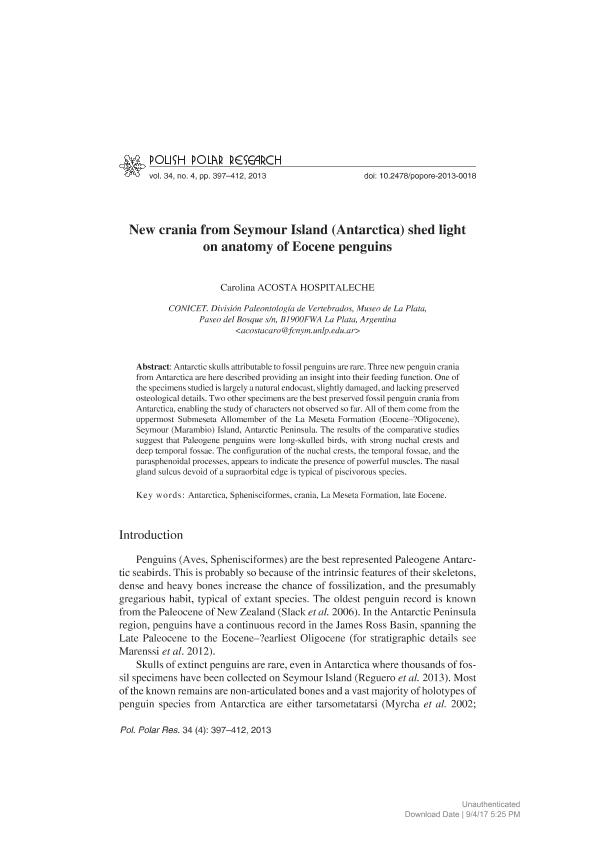Artículo
New crania from Seymour Island (Antarctica) shed light on anatomy of Eocene penguins
Fecha de publicación:
12/2013
Editorial:
Polish Acad Sciences Committee Polar Research
Revista:
Polish Polar Research
ISSN:
0138-0338
Idioma:
Inglés
Tipo de recurso:
Artículo publicado
Clasificación temática:
Resumen
Antarctic skulls attributable to fossil penguins are rare. Three new penguin crania from Antarctica are here described providing an insight into their feeding function. One of the specimens studied is largely a natural endocast, slightly damaged, and lacking preserved osteological details. Two other specimens are the best preserved fossil penguin crania from Antarctica, enabling the study of characters not observed so far. All of them come from the uppermost Submeseta Allomember of the La Meseta Formation (Eocene–?Oligocene), Seymour (Marambio) Island, Antarctic Peninsula. The results of the comparative studies suggest that Paleogene penguins were long−skulled birds, with strong nuchal crests and deep temporal fossae. The configuration of the nuchal crests, the temporal fossae, and the parasphenoidal processes, appears to indicate the presence of powerful muscles. The nasal gland sulcus devoid of a supraorbital edge is typical of piscivorous species.
Palabras clave:
Antarctica
,
Sphenisciformes
,
Crania
,
La Meseta Formation
,
Late Eocene
Archivos asociados
Licencia
Identificadores
Colecciones
Articulos(CCT - LA PLATA)
Articulos de CTRO.CIENTIFICO TECNOL.CONICET - LA PLATA
Articulos de CTRO.CIENTIFICO TECNOL.CONICET - LA PLATA
Citación
Acosta Hospitaleche, Carolina Ileana Alicia; New crania from Seymour Island (Antarctica) shed light on anatomy of Eocene penguins; Polish Acad Sciences Committee Polar Research; Polish Polar Research; 34; 4; 12-2013; 397-412
Compartir
Altmétricas




